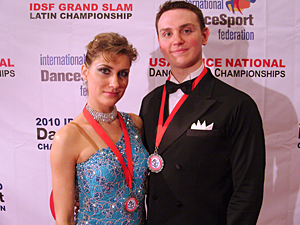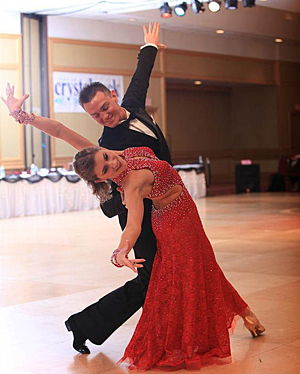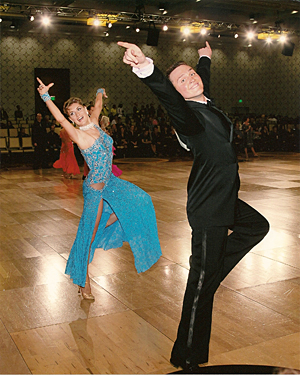
ADVERTISEMENT
- Rozovsky wins prestigious NSF Early Career Award
- UD students meet alumni, experience 'closing bell' at NYSE
- Newark Police seek assistance in identifying suspects in robbery
- Rivlin says bipartisan budget action, stronger budget rules key to reversing debt
- Stink bugs shouldn't pose problem until late summer
- Gao to honor Placido Domingo in Washington performance
- Adopt-A-Highway project keeps Lewes road clean
- WVUD's Radiothon fundraiser runs April 1-10
- W.D. Snodgrass Symposium to honor Pulitzer winner
- New guide helps cancer patients manage symptoms
- UD in the News, March 25, 2011
- For the Record, March 25, 2011
- Public opinion expert discusses world views of U.S. in Global Agenda series
- Congressional delegation, dean laud Center for Community Research and Service program
- Center for Political Communication sets symposium on politics, entertainment
- Students work to raise funds, awareness of domestic violence
- Equestrian team wins regional championship in Western riding
- Markell, Harker stress importance of agriculture to Delaware's economy
- Carol A. Ammon MBA Case Competition winners announced
- Prof presents blood-clotting studies at Gordon Research Conference
- Sexual Assault Awareness Month events, programs announced
- Stay connected with Sea Grant, CEOE e-newsletter
- A message to UD regarding the tragedy in Japan
- More News >>
- March 31-May 14: REP stages Neil Simon's 'The Good Doctor'
- April 2: Newark plans annual 'wine and dine'
- April 5: Expert perspective on U.S. health care
- April 5: Comedian Ace Guillen to visit Scrounge
- April 6, May 4: School of Nursing sponsors research lecture series
- April 6-May 4: Confucius Institute presents Chinese Film Series on Wednesdays
- April 6: IPCC's Pachauri to discuss sustainable development in DENIN Dialogue Series
- April 7: 'WVUDstock' radiothon concert announced
- April 8: English Language Institute presents 'Arts in Translation'
- April 9: Green and Healthy Living Expo planned at The Bob
- April 9: Center for Political Communication to host Onion editor
- April 10: Alumni Easter Egg-stravaganza planned
- April 11: CDS session to focus on visual assistive technologies
- April 12: T.J. Stiles to speak at UDLA annual dinner
- April 15, 16: Annual UD push lawnmower tune-up scheduled
- April 15, 16: Master Players series presents iMusic 4, China Magpie
- April 15, 16: Delaware Symphony, UD chorus to perform Mahler work
- April 18: Former NFL Coach Bill Cowher featured in UD Speaks
- April 21-24: Sesame Street Live brings Elmo and friends to The Bob
- April 30: Save the date for Ag Day 2011 at UD
- April 30: Symposium to consider 'Frontiers at the Chemistry-Biology Interface'
- April 30-May 1: Relay for Life set at Delaware Field House
- May 4: Delaware Membrane Protein Symposium announced
- May 5: Northwestern University's Leon Keer to deliver Kerr lecture
- May 7: Women's volleyball team to host second annual Spring Fling
- Through May 3: SPPA announces speakers for 10th annual lecture series
- Through May 4: Global Agenda sees U.S. through others' eyes; World Bank president to speak
- Through May 4: 'Research on Race, Ethnicity, Culture' topic of series
- Through May 9: Black American Studies announces lecture series
- Through May 11: 'Challenges in Jewish Culture' lecture series announced
- Through May 11: Area Studies research featured in speaker series
- Through June 5: 'Andy Warhol: Behind the Camera' on view in Old College Gallery
- Through July 15: 'Bodyscapes' on view at Mechanical Hall Gallery
- More What's Happening >>
- UD calendar >>
- Middle States evaluation team on campus April 5
- Phipps named HR Liaison of the Quarter
- Senior wins iPad for participating in assessment study
- April 19: Procurement Services schedules information sessions
- UD Bookstore announces spring break hours
- HealthyU Wellness Program encourages employees to 'Step into Spring'
- April 8-29: Faculty roundtable series considers student engagement
- GRE is changing; learn more at April 15 info session
- April 30: UD Evening with Blue Rocks set for employees
- Morris Library to be open 24/7 during final exams
- More Campus FYI >>
2:07 p.m., May 18, 2010----Whether competing nationally in ballroom dancing, participating in cutting-edge cancer research, or serving in the Delaware Army National Guard, University of Delaware doctoral student Justin David has plenty to keep him busy.
David, who graduated from UD in 2007 with a bachelor's degree in biological sciences, teamed up with Marianna Melnikova to take second place in the USA Dance National Championships held April 9-11 in Los Angeles.
“We met through some friends,” said Melnikova, who received her master of business administration degree from UD in 2009. “Justin's partner had moved to another state. I had just graduated from UD and had some free time and wanted to continue dancing.”
Melnikova, who works as a securities settlements specialist at JPMorgan Chase in Newark, began dancing at age nine and was junior age group champion for her region in Voronezh, Russia.
David said his involvement in ballroom dancing competition began during his undergraduate career at UD. “I didn't start any of this until I came to UD in 2004,” he said. “I dance what is called the American Style, and when Marianna and I began dancing together, that is what we decided to focus on.”
The pair worked with the same dance coaches that David and his first partner trained with at the Academy of Social Dance, near New Castle, Del. Getting ready for local and national competitions involved a lot of hard work for him and his partner, David said.
“We take a lesson each week from one of the coaches. This gives us the choreography for our dance routine,” David said. “We practice three to four nights a week, with each session lasting at least a couple of hours.”
The dances, David noted, consist of the waltz, tango, foxtrot and Viennese waltz, and the American Smooth dance style features erect and elegant posture, fluid movement into and out of the traditional “hold,” and elaborate theatricality, including turns, dips and drops.
“When you go to a competition, you don't know what kind of music they are going to use,” David said. “You take the floor, and when the music starts you have to begin your routine. In the standard ballroom dancing style, you are always in a closed ballroom hold, but with the American smooth style, you can break that hold and dance apart, as well as dancing side by side. It is more theatrical, more of a Broadway style.”
The national competition, Melnikova said, was interesting and exciting because it meant competing with up to 12 couples on the floor at the same time.
Dancers had to work hard to impress the judges during a relatively brief time on the floor, Melnikova said.
“It's really subjective, and depends on the nine judges and what mood the dancers are in and how they are prepared emotionally,” Melnikova said. “Although dancers have been practicing for months, each dance last about one minute and a half. You are only on the floor for about seven minutes, and each judge is looking at you for 15 to 20 seconds.”
David said that the national competition was fun, because it included attendees like Len Goodman and Carrie Ann Inaba, from the Dancing with the Stars television show, and it was rewarding because of the all the hard work put in by his partner and his coaches paid off.
“We were surprised, because ours is a brand new partnership. Many of the other couples in the competition were older and have been dancing together for long time,” David said. “Being able to achieve so much in a very little time speaks well for us and our coaches.”
David also noted the support given by the UD Ballroom Dance Team and its director, Patricia Grim, assistant to the chairperson in the School of Nursing.
“They supported us all the way, and that is what makes the UD Ballroom Dance Team unique,” David said. “When we succeed, that reflects well on the team. Without Pat [Grim] and her support, we could not have done any of this.”
In addition to Grim, Melnikova also thanked her parents who got her into dancing at age nine, as well as previous coach Yakov Kystovinov and current coaches Pete Taylor and Tony Scheppler.
“I have enjoyed dancing throughout my whole life,” Melnikova said. “Besides keeping me physically fit, dancing has had a deep impact on developing my personality. Dancing has helped me become the person I am today.”
Teamwork also is important with David's other commitments, which includes serving as a specialist with the Delaware National Guard 287th Army Band.
“We do the regular army training, and also are responsible for soldier and civilian support, which includes playing for deployment and returning ceremonies,” David said. “This is a very emotional thing, when families are saying goodbye or when they are being welcomed back by loved ones after deployment.”
Musical elements of the band include ceremonial band, show band, rock band, woodwind quintet, brass quintet, jazz combo, sax quintet and concert band.
“I play rhythm guitar in our rock band,” David said. “While we play the formal ceremonial kind of music, the soldiers also like to hear rock music, including covers of classics like Sweet Child of Mine by Guns and Roses.”
The 287th Army Band performs in parades and in concert venues ranging from Bellevue State Park to Wilmington's Grand Opera House.
“It's was a great way to get through college,” David said. “It also is great when you like the job you are doing.”
David also is involved in adult liver cancer research at the Nemours Center for Childhood Cancer Research, A.I. duPont Hospital for Children, under its director Ayyappan K. Rajasekaran.
Nemours and the University of Delaware are part of a collaboration of six Delaware academic and clinical institutions, led by the Delaware Biotechnology Institute at UD. In 2009, the partnership received a $17.4 million grant in 2009 from the National Center for Research Resources at the National Institutes of Health (NIH).
The partnership program, the Delaware IDeA Networks of Biomedical Research Excellence (INBRE), also includes Christiana Care Health System, Delaware State University, Delaware Technical and Community College and Wesley College.
Funding from the five-year grant is being used to develop the state's biomedical research capacity in the target areas of cancer, cardiovascular, and neuroscience research.
“Dr. Rajasekaran is my adviser, and he is a great graduate student mentor,” David said. “I am working on some of the cutting edge of research that is going on in Delaware. The project on adult kidney cancer is a continuation of the work that Dr. Rajasekaran was doing at the University of California at Los Angeles, and has some cross over involving the role of proteins in Wilms' Tumor (a kidney cancer that occurs in children).”
A goal of the project, David said, is to create more target therapies to improve patient survival rates.
“I always wanted to have a job that would be not just for my own benefit, but also to improve the lives of others,” David said. “I plan to continue in the research field, and keep dancing on the side.”
David said he has enjoyed both his days as a UD student and his experiences with friends in the Newark area and beyond.
“I have met a lot of interesting people and have a lot of great friends here,” David said. It really has been a great place to begin my life and to branch out. If I had not come to UD, I would not have had these types of experiences.”
Article by Jerry Rhodes




